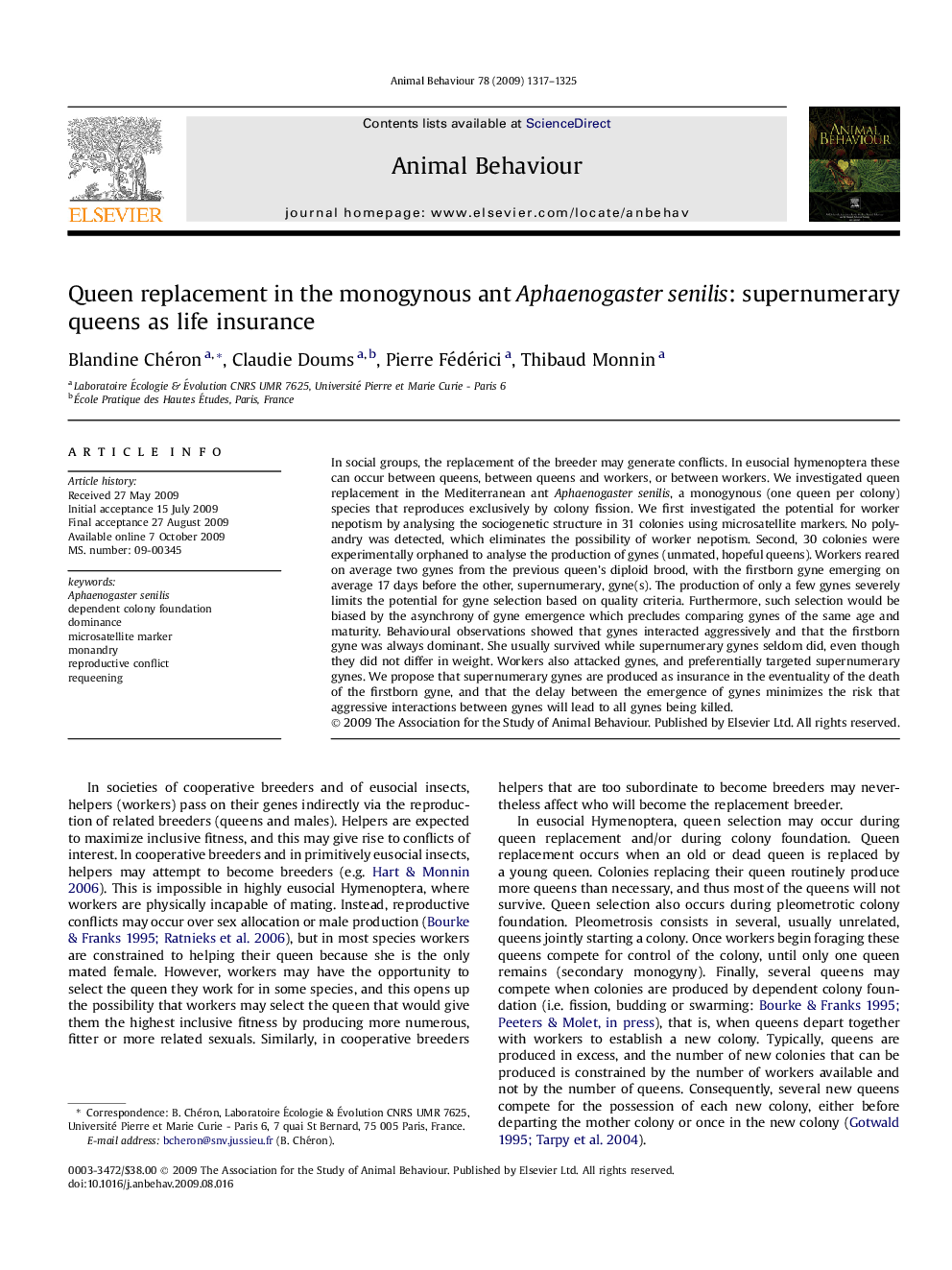| کد مقاله | کد نشریه | سال انتشار | مقاله انگلیسی | نسخه تمام متن |
|---|---|---|---|---|
| 2417542 | 1104322 | 2009 | 9 صفحه PDF | دانلود رایگان |

In social groups, the replacement of the breeder may generate conflicts. In eusocial hymenoptera these can occur between queens, between queens and workers, or between workers. We investigated queen replacement in the Mediterranean ant Aphaenogaster senilis, a monogynous (one queen per colony) species that reproduces exclusively by colony fission. We first investigated the potential for worker nepotism by analysing the sociogenetic structure in 31 colonies using microsatellite markers. No polyandry was detected, which eliminates the possibility of worker nepotism. Second, 30 colonies were experimentally orphaned to analyse the production of gynes (unmated, hopeful queens). Workers reared on average two gynes from the previous queen's diploid brood, with the firstborn gyne emerging on average 17 days before the other, supernumerary, gyne(s). The production of only a few gynes severely limits the potential for gyne selection based on quality criteria. Furthermore, such selection would be biased by the asynchrony of gyne emergence which precludes comparing gynes of the same age and maturity. Behavioural observations showed that gynes interacted aggressively and that the firstborn gyne was always dominant. She usually survived while supernumerary gynes seldom did, even though they did not differ in weight. Workers also attacked gynes, and preferentially targeted supernumerary gynes. We propose that supernumerary gynes are produced as insurance in the eventuality of the death of the firstborn gyne, and that the delay between the emergence of gynes minimizes the risk that aggressive interactions between gynes will lead to all gynes being killed.
Journal: Animal Behaviour - Volume 78, Issue 6, December 2009, Pages 1317–1325